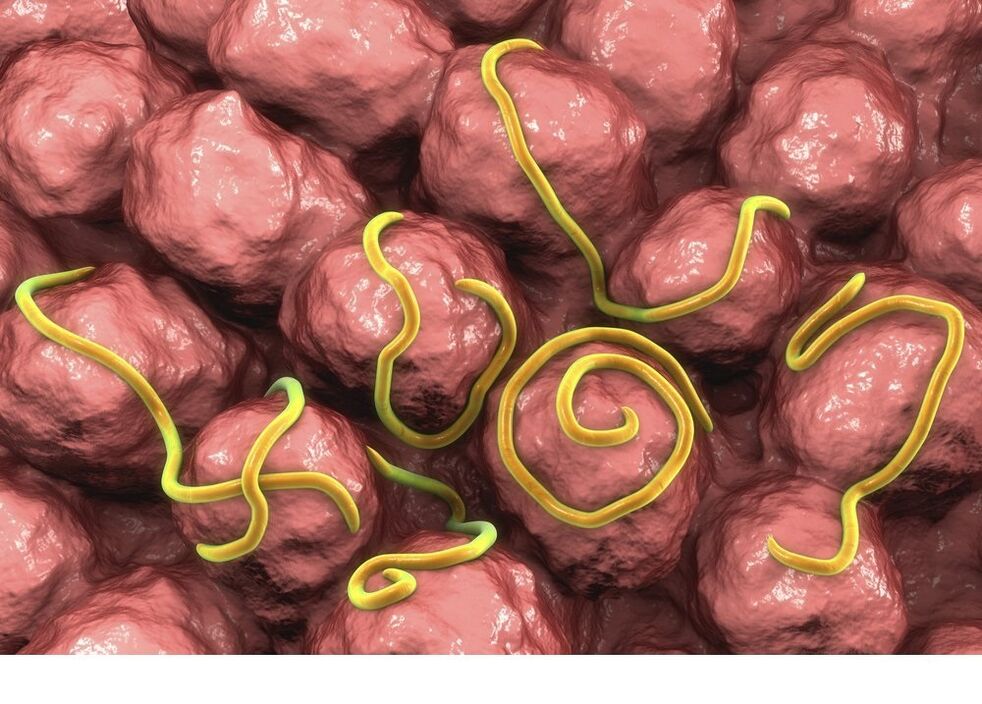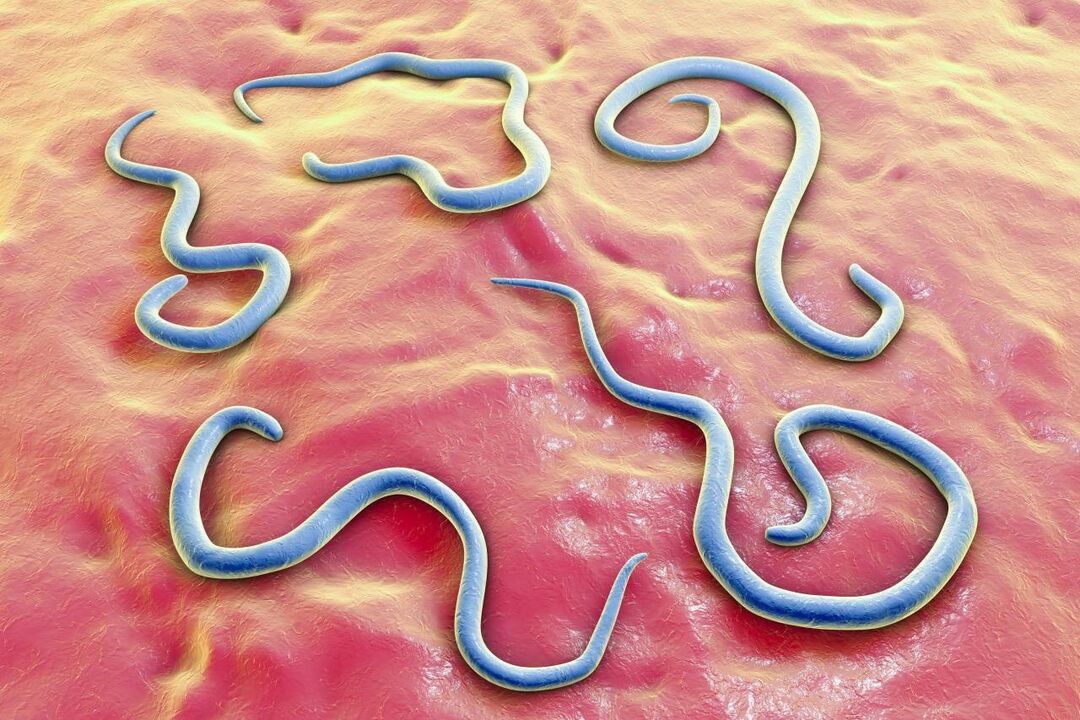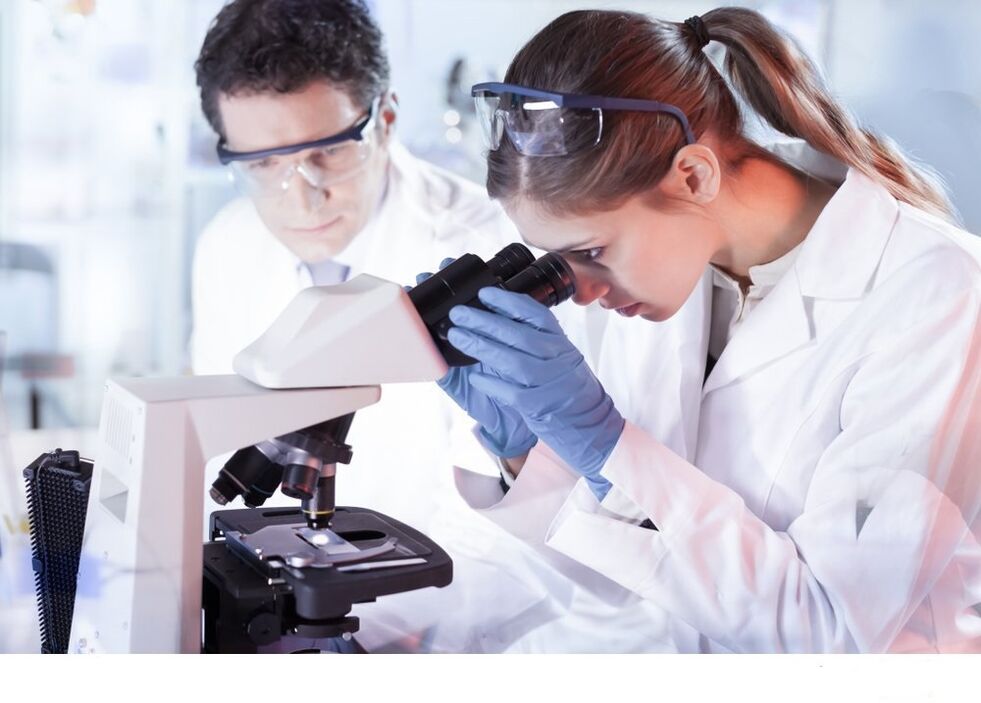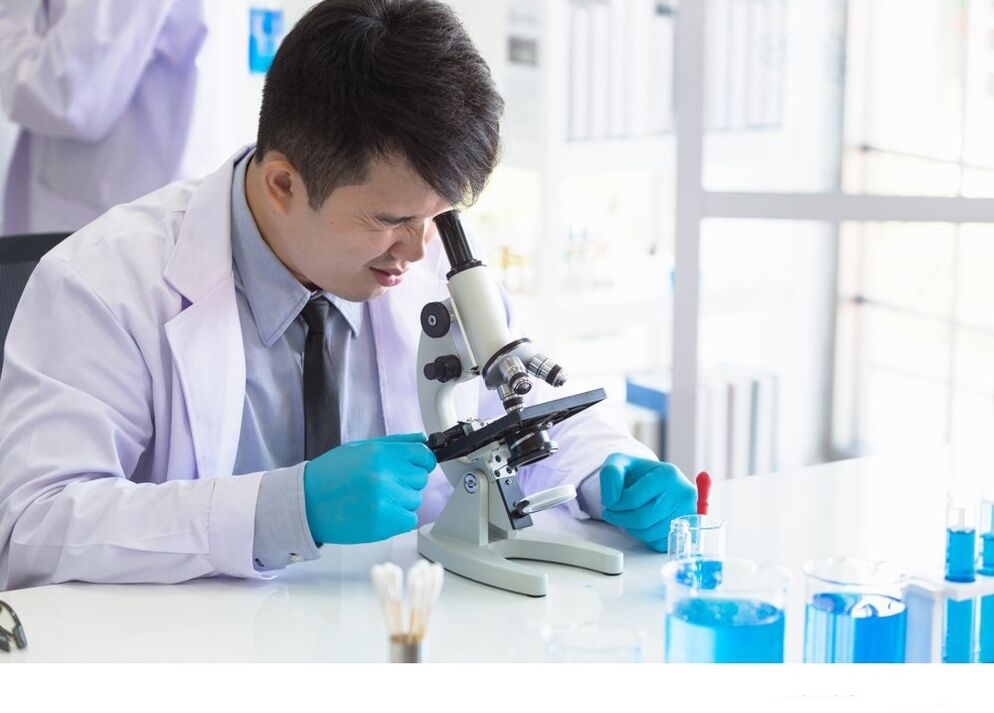Helminthiasis, or diseases caused by helminths, is one of the most common diseases among humans. The World Health Organization estimates that one in four people on the planet is infected with a helminth. Not surprisingly, you can catch this infection anywhere in the world. Doctors equate the incidence of helminthiasis with the spread of influenza and ARVI.
Doctors estimate the scale of worm infections in our country at 270 cases per 100, 000 people, but according to experts, the real incidence is several times higher. This is because a person often does not realize that he is in the body of an uninvited guest. If the helminths do not show themselves in any way, the disease will not be diagnosed for decades.
About helminths
Parasitic worms, helminths, or worms?
This vast group of creatures has several names at once. First of all, we are talking about parasites, that is, living organisms that live at the expense of others. In addition, we are talking about endoparasites, that is, living inside another organism - in their tissues and organs. Finally, we are talking about worm-like creatures in the body of an infected animal that are ideal for long-term survival and efficient reproduction.
Therefore, helminths are parasitic worms. The term "helminths" was once used by Hippocrates. Among humans, these unpleasant creatures are also called worms - from the ancient Greek word simply means a parasitic worm.
Thus, we are not mistaken in calling helminths worms or parasitic worms. And if we talk about helminthiasis, these diseases can also be called "parasitic infections".
Different worms in humans

In all, scientists know that there are 287 species of helminths that can parasitize humans. Only 65 species have been identified in our country, and only 24 species are the most common.
Human helminths live throughout the body and each species has its own advantages.
Basically, the worms enter the gastrointestinal tract and mainly ascaris, pinworms, three types of lenteworm, broad lenteworm, worm and others. They prefer the small intestine that you can find. Vlasoglav alone occupies the large intestine.
In the liver, or rather in its bile ducts, as well as in the gallbladder, liver, opisthorchiasis, etc. Can be found. Liver fluke is located in the lungs. Trichinella affects the muscles. Adult tapeworms live in the small intestine, and the larvae (cysticercus) can be found in the eyes and central nervous system. Schistosomes (helminths from the tropics) prefer the vessels of the gastrointestinal tract and genitourinary system.
Filariasis is generally ubiquitous - in the lymphatic system and closed body cavities - in the retroperitoneal cavity, in the pericardial sac, and the larvae are generally found in the blood or skin.
Human helminth species
Helminths, the types of which are most interesting to doctors, are divided into two main types: flat and round (nematodes). The classification is based on the cross-section of the worm's body: in round worms it is circular, and in straight worms it is aligned from the back to the conventional abdomen. Flatworms are divided into two more classes: swallows (trematodes) and tapeworms (cestodes).
- Nematodes. Most nematodes inhabit the human gut. This group is very different from each other in size - roundworms, pinworms, Trichinella, whipworms, etc. , ranging from a few millimeters to 1. 5 meters. Includes. They all have their own developed digestive system. Nematodes have both male and female. It is not difficult to distinguish them in adults: females are generally twice as large, and in males the "tail" is folded to the "belly" side.
- Trematodes. The body of trematodes resembles a leaf or lanceolate, and its size can not be compared with other helminths: they are small worms from a few millimeters to 3, 5-5, 5 cm long. Unlike roundworms, trematodes have a pair of pacifiers in the mouth and abdomen. Their digestive system is in its infancy. An important part of the species from this group are hermaphrodites, that is, they combine the characteristics of both sexes. The exception is schistosomes, which are both male and female.
- Cestodes. Cestodes are worms with a long ribbon broken into short pieces with a head with hooks and pacifiers at one end. These worms live only in the small intestine - their whole bodies do not fit into another organ. And this is not surprising, because the length of the tapeworms can reach 10-11 meters. They generally do not need a digestive system because they have absorbed everything they need from the food they eat. All ribbons are hermaphrodites.
The larval stage of helminths is called the intermediate organism (animals, fish, mollusks and, of course, humans), and the carrier of the adult form is called the final host.
Bio- and geohelminthiasis are also referred to as whether a particular type of worm has a developmental stage in the body of an intermediate host.
- Geohelminths do not have such a stage. The eggs of the worms fall to the ground, where they wait until they are brought to the body of the future owner by the will of fate. Geohelminths whipworms, roundworms, hookworms, etc.
- Biohelminths have such a stage and can have several hosts. Examples include Trichinella, tapeworms, schistosomes, all flatworms, and so on.
Some scientists now identify a third group of worms with a transmission mechanism - pinworms (geohelminths) and dwarf tapeworms (biohelminths). These parasites are spread through contact with an infected person.
In addition, anthroponoses and zoonoses are isolated because of which hosts play a key role in the life of helminths.
- The first category includes helminthiasis, which is a mandatory stage in a person's life: ascariasis, enterobiasis, etc.
- The substances that cause zoonoses include helminthiasis, which can exist successfully without a person, but our species are also susceptible to them, and if an infection occurs, the worms will not interfere with life and prosperity. This category includes opisthorchiasis, diphyllobotriasis, etc.
How does helminth infection occur?
People are often infected with worms, so to speak, by swallowing helminth eggs. The most striking example is pinworms, which a child can take their eggs to a sandbox (a way of infection at home). The food route (with food) is typical for roundworms - contaminated but poorly processed seafood or contaminated vegetables or fruits and trematodes that enter the body when eating meat.
However, food is not the only way to get helminth infections. Eggs can enter the human body through the inhalation of dust. And hookworms and schistosomes enter the body through the skin and are called infectious worms, and the route of infection is under the skin. Because schistosomes can be picked up while swimming in a pool, this route of infection is also called water.
In the tropics live filamentous plants, as well as wuchereria, which are spread by mosquito bites. And this is a vector-borne infection.
Infection with helminths can also occur through contact with infected animals - cats and dogs. Usually people get roundworms (toxocar, etc. ) and tapeworms from animals. In the process of licking, pets pass worm eggs through their fur. A person who strokes such an animal and does not wash his hands immediately afterwards runs the risk of getting an infection in his mouth. Another option for worm infestation is to clean the trash can without gloves.
How do helminths affect the body?

Mechanical impact
This category includes any helminthic activity in which the integrity of the host's tissues is compromised. For example, adult helminths with hooks and suckers repair themselves when they damage the gastrointestinal mucosa. As a result, tissue erosion develops in the area of the worm's localization, ulcers form, and the nutritional processes of the mucous membrane are disrupted, which can lead to death (necrosis).
Migratory larvae moving inside the body can also cause bleeding and inflammation in the affected areas - making it easier for them to penetrate deep into the tissues. Intestinal helminths often cause the development of appendicitis, intestinal obstruction and even rupture.
Finally, the cysticercus, which enters the brain and actively grows there, compresses the tissues that can cause death.
Host nutrition
First, helminths "rob" their hosts by eating the food they eat. Second, some human helminths feed on blood themselves - this is what worms and whipworms do, or they take in substances necessary for hematopoiesis. Therefore, anemia may develop against the background of parasitic infection.
A long-term chronic infection with helminths that absorb metabolically valuable nutrients is diagnosed as a protein-calorie deficiency.
Poisoning the human body with helminth toxins
The metabolic products of lashes and tapeworms destroy erythrocytes, and ascaris secretions cause capillary dilation and consequent bleeding.
Some parasitic worms begin to pose an increased danger by releasing substances with necrotic and hemotoxic properties after death.
Allergy to helminth proteins
Helminths are foreign organisms to us, so our body perceives many of the proteins they secrete (during vital activity or after death) as a potential threat and may consider them antigens. Antibodies to these antigens are formed - immunoglobulins IgE and IgG-4. These antibodies are destroyed when they come in contact with mast cells, basophils and eosinophils. At the same time, there is the release of substances that cause allergic reactions (allergy mediators) - histamine, serotonin, heparin, etc.
Suppression of the body's defenses
The negative effects of helminths on the body can be indirect. As mentioned above, tapeworms in the small intestine can cause a decrease in stomach acid. And this significantly reduces the protection against the penetration of pathogenic bacteria into the body.
Many helminths have an immunosuppressive ability, ie they suppress the body's defenses, thus providing a comfortable stay for a long time. This is an evolutionary adaptation that they acquired while adapting to a narrowly defined circle of owners. However, suppression of the human immune system increases susceptibility to other infections and diseases.
Cancer risk

Some chronic helminthiasis significantly increases the likelihood of cancer. Parasites destroy tissues and organs in their vital activities, thereby causing the development of malignant tumors here. Cancer is often associated with opisthorchiasis, schistosomiasis, clonorrhea, etc. Grows in the background.
Stages of helminthiasis
What are the symptoms of helminthiasis? Once the worms enter the body, the symptoms of the infection will depend on the stage of the disease.
There are 4 main stages of helminthiasis:
- Acute (early) stage helminthiasis. At this stage, the causative agent of the infection enters the human body, which causes the body to become sensitive to helminth proteins. The first symptoms of helminths appear 2-4 weeks after infection. Generally, allergic-like reactions develop during this period - itchy skin rashes, conjunctivitis, cough, swollen lymph nodes, inflammatory processes in the joints, tests for increased concentrations of eosinophils, etc.
- Hidden (hidden) stage. At this stage, the helminth develops into an adult and is finally identified with a permanent residence, after which the helminthiasis progresses to a chronic stage.
- Chronic (late) stage. At this stage, adult helminths actively reproduce, producing tens and hundreds of thousands of eggs and larvae that enter the environment or spread to other organs of the body. Helminths in children cause muscle cramps, convulsions - epileptic, hysterical, etc. May provoke. Doctors note that all these symptoms of helminthiasis are not specific and resemble the symptoms of other diseases, so it is impossible to diagnose them. Rather, there are several helminths whose symptoms are very characteristic, but should even be checked using a number of tests.
- Exit stage. The term means either complete recovery of the patient or disability against the background of complications of helminthiasis. These include malignant tumors in opisthorchiasis and schistosomiasis, cirrhosis of the liver, etc.
Helminths: symptoms of infection

How helminthic heat (the entry of helminths into the body) affects the human body is determined by many factors: the method of penetration, the degree of infection, the duration of the disease and the life of the helminth, its characteristics, nutrition and development period.
In general, doctors distinguish the following symptoms of a helminth infection, in the presence of which you should consult a doctor and undergo an examination:
- periodic frequent nausea and vomiting, abdominal pain;
- frequent allergies;
- sleep disorders, chronic fatigue, irritability;
- itching in the anal area;
- frequent urinary tract infections;
- chronic gastrointestinal diseases, dysbiosis;
- signs of chronic intoxication of the body: frequent colds, blue circles under the eyes, paleness, enlarged lymph nodes;
- vulvovaginitis;
- increased levels of eosinophils in blood test results;
- growth and weight were delayed.
The question arises: if there are helminths in the body, will the symptoms of the infection appear immediately or only after a while? Are there helminths that are difficult to detect signs of infection? Doctors point out that with a non-intensive invasion, the first symptoms of helminthiasis may appear in a month or two and a few years later. That is, there will be no signs of helminth infection during this time.
Manifestations of helminth infection in children
Helminths are more common in children than in adults. This is due to the lack of hygiene skills, as well as close contact with the environment, which can be a source of helminth eggs. Such an environment is a sandbox in a playground, beds in a grandmother's garden, someone else's toy played by an infected child, and so on.
What are the most common complaints of children infected with intestinal nematodes:
- gastrointestinal tract dysfunction - 75% of children;
- allergic reactions - 71%;
- sleep disorders - 54%;
- appetite disorders - 44%;
- abdominal pain - 40%;
- itching in the anal region - 36%.
To a lesser extent, children developed immune disorders (19%) and bruxism, ie tartar (16%), against the background of helminth infections. This is a paradox, but these two symptoms are generally accepted by the population as signs of helminths.
Diagnosis of helminthiasis
What are the tests for helminths?

It should be understood that helminth analysis alone is not sufficient. None of the available methods for self-detection of parasitic worms can be the basis for a definitive diagnosis. According to doctors, in some cases, a positive result can be achieved only 8-10 times! There can be many reasons for this: the females lay eggs at different intervals that do not coincide with the sampling moments, the biomaterial samples were empty because they were taken in the wrong places, the disease was at such a stage that it was almost impossible to identify by selected methods.
The most common types of analysis for helminths are the study of feces for helminth eggs, perianal pruritus, analysis of duodenal contents, analysis of biomaterials from the patient's lungs, blood analysis for helminths, etc.
Less urine is required for diagnosis (schistosomiasis of the genitourinary system, enterobiasis), a study is performed for helminths (trichinosis) of the patient's muscles, which are sampled by biopsy.
How is feces checked for helminth eggs?

For the analysis of helminths, 50 g of the patient's feces is sufficient (approximately 1 tablespoon). Today at the pharmacy you can buy a special clean container for the tests you need to collect feces for helminth eggs. It is better to give the sample to the laboratory on the same day (for strongyloidiasis and hookworm - no later than 4 hours after collection). If necessary, you can store a fecal sample for helminths at a temperature of 0 - 4 ° C for no more than a day, it is absolutely impossible to freeze it. In principle, it is possible to use special preservatives that allow the samples to be stored for up to several months.
Perianal scratching - analysis for helminth eggs
Perianal scratching, enterobiasis, teniasis, teniarinchiasis, etc. As used to diagnose helminthiasis. Unlike the fecal analysis for helminths, the scraping material is collected from the skin around the anus with a cotton swab, a wooden spatula, glass eye sticks, or adhesive tape. The procedure for collecting material for analysis for helminth eggs is performed early in the morning and the patient should not be washed in the evening or in the morning.
An important point: a repeated analysis for helminths in this way does not guarantee the reliability of the result, even in the case of enterobiosis. Female pinworms lay eggs at certain intervals, and if you do not catch the "right moment", then you can be sure that there are no eggs - no worms.
Analysis of the composition of the duodenum (bile)
Bile collection is performed using an empty stomach. Because this method is invasive (unlike methods such as stool, urine collection, and perianal shearing for helminth eggs), it is only prescribed for serious indications when a specific helminthiasis is suspected. Bile is tested for strongyloids and ankilorman larvae, and parts of the bile are also analyzed for the presence of helminth eggs that live in the pancreas and liver ducts.
Blood test for helminths

In addition to the above methods, there are also so-called serological methods for the diagnosis of helminthiasis. In this case, a blood test is performed for helminths, or rather antibodies against them.
Today, the main serological method is enzyme-linked immunosorbent assay (ELISA), which is distinguished by high specificity and highest sensitivity (90%) among all other methods. That is, it allows a person to determine very precisely what kind of helminths they are infected with, and to detect them, even if they are very small. ELISA reliability is 60%. ELISA is extremely relevant for the detection of tissue helminthiasis in which worms parasitize the patient's organs and tissues (trichinosis, toxocariasis).
Instrumental methods of diagnosis of helminths
It is not always possible to detect helminths using the above laboratory diagnostic methods, including immunological analysis. Some parasitic worms have a dense capsule that is resistant to external influences. They can also be hidden in tissues that are somewhat protected from inflammatory reactions in the body - such as the spinal cord. Some types of worms have their own protection - anti-enzymes. Worms that can reproduce sexually exchange genetic information. Given their rate of reproduction and generational renewal, it is not surprising that such helminths are less susceptible over time to detection and treatment of parasitic infections.
If the analysis of feces for helminths, blood and other methods does not give results, then such parasites can be removed from instrumental diagnostic methods - X-ray, ultrasound, computed tomography, etc. Liver tissue, etc. Can be detected. spleen, enlargement of the lymph nodes in the latter, and finally, in some cases - echinococcus, large groups of intestinal worms - tangles - you can see the parasites themselves.
Treatment of helminthiasis
Traditional medicine has tried and mistakenly found a number of plants with anthelmintic properties: aspen, pumpkin, chamomile, meadow, male fern, etc. effect:
- hukurbitin (pumpkin seeds);
- annual wormwood of artemisia);
- ascaridol (ragweed);
- santonin (citrine wormwood);
- thymol (thyme);
- pelletierin (pomegranate root);
- carvacrol (oregano, thyme, bergamot);
- diospirol (dates);
- arecoline (arec palm);
- pyrethrins (Dalmatian chamomile);
- tremulatsin (aspen);
- nicotine (tobacco) and its isomer anabasine (tobacco and leafless stall);
- emetin (vomiting root).
And today a significant part of anthelmintic drugs contain the same active ingredients that previously had anthelmintic effects in mixtures and tinctures.
results
- Helminthiasis is one of the most common diseases in the world. Anyone around you has a 100% chance that there are people and animals infected with helminths.
- However, if the number of individuals in the body is small and the body itself is generally healthy, the disease can be asymptomatic for many years without manifesting itself in any way.
- Regular medical examinations every 3 years or tests once a year do not guarantee that such a person does not really have helminths.
- The symptoms of worms in the body can be very similar to the symptoms of other diseases. Therefore, if for some reason the treatment of intestinal diseases and other similar pathologies does not help permanently, you should consider testing for helminths.
- According to the results of one analysis for helminths, helminthiasis is not diagnosed because it is possible to get both false-positive and false-negative results. You should not try to go through a random examination independently - it is better to consult a doctor: he will choose tests that will allow you to accurately determine whether a person is there, based on the sum of symptoms, nutritional information and travel information. helminths or not.
- You cannot independently prescribe pills for helminths. A remedy for worms can have contraindications for a particular patient and can cause serious harm if used incorrectly.






































